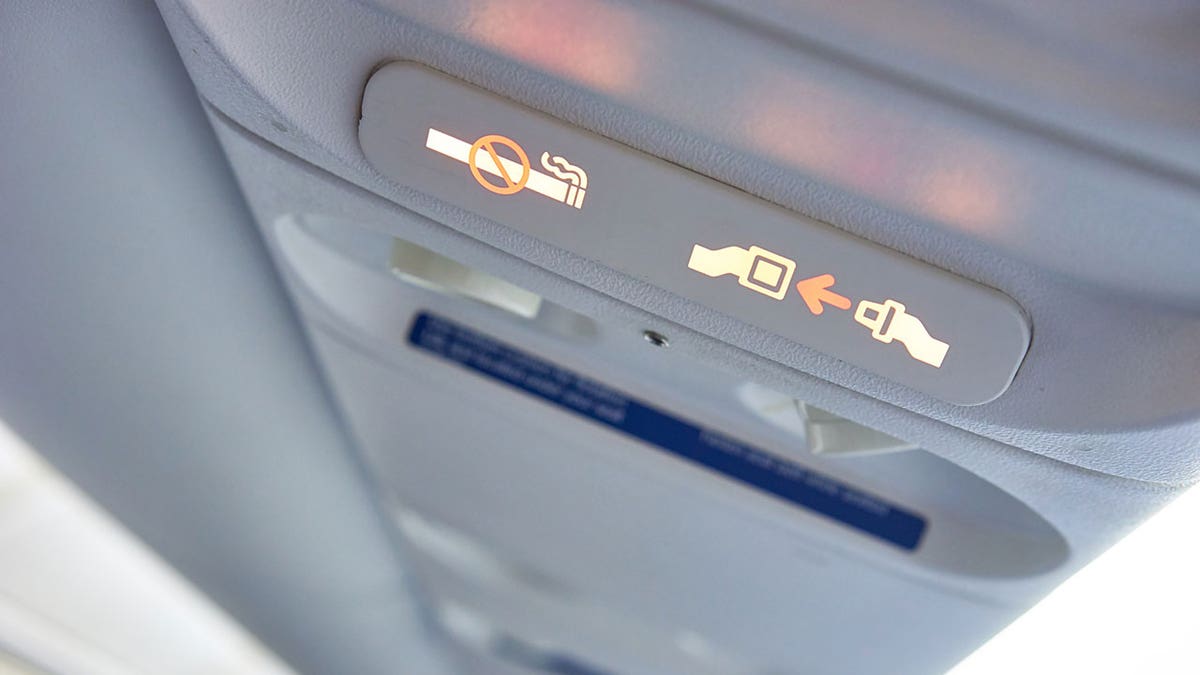
Why is the seatbelt light always illuminated? (iStock)
Get out the insect repellent and fireworks, because summertime is here.
But wait, can you bring this stuff on a plane?
MISSING LUGGAGE? HERE'S WHAT TO DO
Find out what advice airlines and U.S. government sources offer on summer travel — and what they really mean:
1. Liquids
When they say no large amounts of liquids in carry-ons, they mean that most of the time … but not all the time. You can bring insect repellent on a plane, for example, but only in a little container that holds no more than 3.4 ounces. That’s the case for most liquids with one big exception: duty-free alcohol. This item must have been purchased outside the country; you must be traveling to the U.S. on a connecting flight; and the alcohol has to be in a see-through, tamper proof bag that includes a receipt showing the bottle was purchased within 48 hours. It might be a whole lot simpler to just go to a liquor store when you get home.
2. Fireworks
When the TSA says no fireworks, they mean it. These colorful pyrotechnic devices aren’t called explosives for nothing, so no Fourth of July rockets or sparklers in carry-ons or checked-bags. This won’t keep people from trying — it happens every year — but in every instance we’ve ever heard of, the fireworks are discovered, confiscated and tossed.
3. Buckling up
When the pilot says buckle your seat belt, what he or she really means is buckle up the moment you sit down and keep the belt buckled throughout the flight. That’s because turbulence can strike with no warning, and if severe enough, can send the untethered passengers crashing into the ceiling. Just ask flight attendants, the most common victims of turbulence. While in your seat, keep your belt on.
FOLLOW US ON FACEBOOK FOR MORE FOX LIFESTYLE NEWS
4. Airport ETA
Airlines always say get to the airport early. What they really mean is that terminals will be mobbed in summer, and if you have a long wait at security, you could miss your flight. Most U.S. airlines recommend travelers arrive at the airport one hour before departure for domestic flights and 90 minutes to two hours before for international travel, but Delta requests two for domestic flights and three for international. We would rather err on the side of caution, since being bored in an airport for an hour or so is nothing compared to missing a flight (or paying the $200 change fee once you’ve missed it).
5. Lost and found
The typical advice: Fill out a claim or go to a specific counter. But what they really mean depends on where you lost your stuff, or what it is.
• Lost electronics, bag items: Your plane is taking off, and you reach for your phone; it’s not there. The standard advice is to check with the airline’s lost and found department (you’ll find contact info on the airport’s website). However, if you lost it at or near a security checkpoint, you’ll have to check with the separate TSA lost and found departments (and here’s a link to help you find all of them). Tip: A lot of phones look alike, so put some kind of identifying mark or label on yours before you fly.
7 QUESTIONS CONFUSED TRAVELERS ALWAYS ASK
• Lost ID: You’re at the security checkpoint and reach for your driver’s license; it’s not there. Hopefully you’ll find it in your car (or it’ll be turned in by that nice taxi or Lyft driver) but how to get through security? All you need is time to answer a few questions so the TSA officer can be sure you are who you say you are. Calm down, it happens a lot.
• Lost on the plane: You’re off the plane when it occurs to you those wonderful noise-cancelling headphones are still on the aircraft. Go back to the gate immediately to see if someone can go back and retrieve them; ask nicely, since this is a pain for the airline reps, and they are not the ones that lost your headphones.
